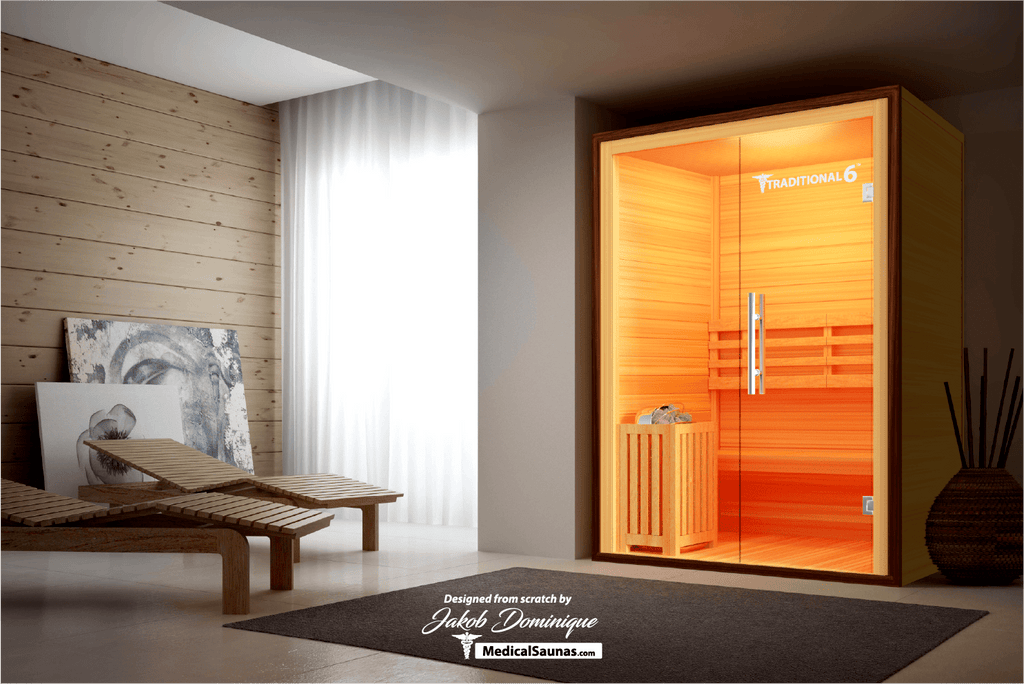The 30-Second Trick For Traditional Sauna
The 30-Second Trick For Traditional Sauna
Blog Article
Some Ideas on Traditional Sauna You Need To Know
Table of ContentsEverything about Traditional SaunaTraditional Sauna for DummiesThe Of Traditional SaunaThe 8-Minute Rule for Traditional Sauna
The majority of the weight lost in a sauna is water loss and is re-gained upon rehydrating. Without a doubt sauna can be an essential part of a healthy weight loss program. To look at the differences between traditional and IR saunas, I will divide these right into proven, academic, and produced differences.Thus, the most popular point in the saunawhich is at the ceiling straight above the sauna heateris typically between 185 and 190 F. Traditional Sauna. Claims that a conventional sauna exceeds 200 F is merely not real and not relevant for electrical saunas offered in the US. The temperature level for a far-infrared sauna is normally set in between 120 and 140 F; nevertheless, unlike the conventional sauna, the objective in and IR space is not to achieve a heat
Due to this, the temperature level distinction is almost unnecessary, because extreme sweating leads to both sauna types, yet the approach of heating up the body is different. In an IR sauna the bather will really feel hot and will certainly sweat a lot, but at a lot lower temperatures. Hence, if the goal is to invest longer time periods in the sauna, the IR sauna is a good selection.

5 Simple Techniques For Traditional Sauna
When the high temperature is attained, the components cycle on and off to keep the heat. The majority of conventional sauna individuals take pleasure in putting water over the rocks to produce vapor to elevate sauna moisture degrees. The advantages of pouring water over the rocks consist of: making the space a lot more comfy, moistening the nasal passages, and allowing the use of aromatherapy by mixing essential oils with the water.
In a far-infrared sauna, the warm front permeate the body to successfully warm the body and elevate the body core temperature level. To attain this increased temperature, Far-infrared emitters create infrared energy which is close to the very same wavelength as that which the body normally emitsoften described as the "Essential Array" of 7 to 14 microns), so the power is well gotten by the body.
When the energy gets in the body, it triggers the body temperature level to enhance and eventually results in sweating. In an infrared sauna it is very published here important for the emitters/heaters to stay on practically constantly. Because there is no mass of rocks to maintain warmth, the sauna will cool if the emitters shut off.
As discussed over, the sauna bather in an infrared space wishes to position himself before running emitters to get optimal advantage from the warm. The heating time for the 2 rooms can be extremely different, depending on just how the rooms are used. For a standard sauna, a bather must allow 30-40 mins for the space to accomplish a desired temperature level and to appropriately pre-heat the rocks.
Some Known Facts About Traditional Sauna.
A well constructed sauna will normally attain a temperature of 150-160 F in regarding 30-40 mins. For hotter temperature levels, the room may require to warmth for a longer period.
To some, 15 minutes was "lost" while the infrared power heated up the wood panels as opposed to warming a body, while others locate a pre-heated room to be a lot more comfy and think a raised beginning temperature is essential to start sweating. The size of suggested usage for each and every room is roughly the exact same (10-15 mins per session); however, hop over to these guys due to the lower air temperature levels and the ability to really see this here feel the effects of infrared heat faster than a traditional sauna, it is not unusual for an individual to spend an overall of 20-30 minutes in an infrared sauna.
Typical saunas tend to be bigger (thus utilize more power) than infrared saunas, although traditional saunas are certainly readily available in one and 2 person sizes as well. For a two-person typical sauna, 5x6 or 5x7 dimension is most prominent. The top bench can conveniently seat two or 3 individuals and is likewise long enough to exist down throughout the sauna session.


The typical expense per kWH of power in the U.S. is approximately $0.11, so a 4.5 kW heating unit will certainly cost roughly $.50 to compete one hour, if the heater runs constantly for one hour. Normally a sauna heater will certainly run for 75% of the very first hour and 50% of succeeding hours on because the elements cycle once the established temperature is accomplished.
5 Simple Techniques For Traditional Sauna
A 2 individual far-infrared room is generally literally smaller than a traditional sauna, typically concerning 4' x 4' or smaller sized. The IR home heating system is usually 1.5-1.7 kW utilizing a 120 volt 15 amp plug-in solution. Since the space can be used earlier than a sauna area, we will certainly assume the room is used for to of an hour including warm up time.
Lastly, there is a rarely talked about difference in the social experience between the two rooms. While our society has lost a few of the social benefit of the traditional sauna experience, it can be very socially rewarding. From family time in the sauna, to heart-felt discussions with loved ones, to sauna partiesthe typical sauna experience can cause intimate mingling.
The majority of greater end infrared spaces consist of tinted light treatment, sound systems and full-glass fronts.
Report this page